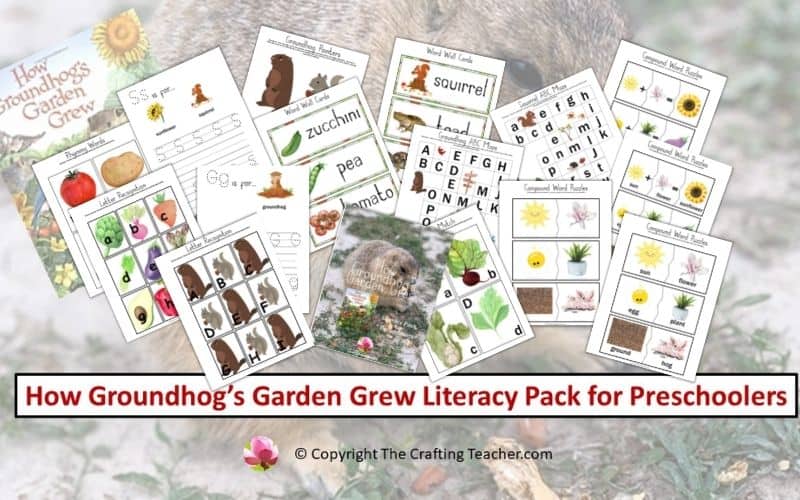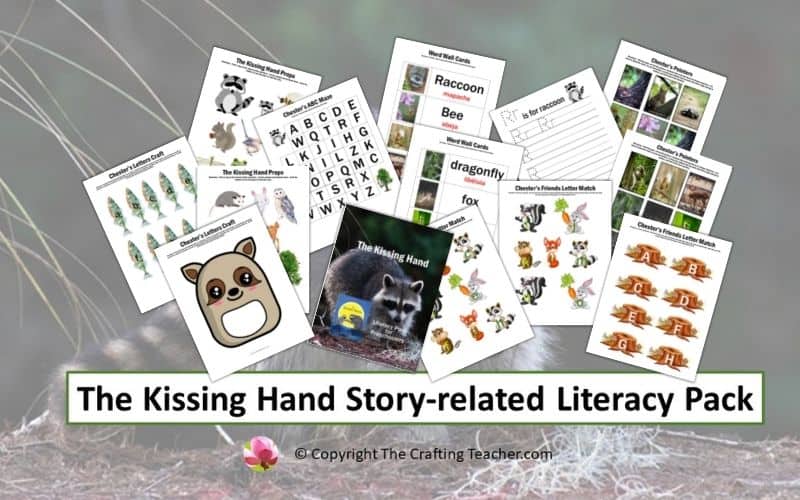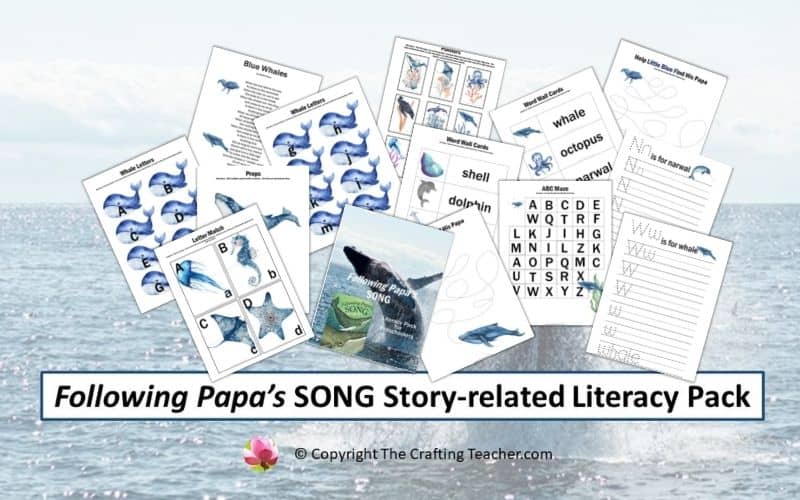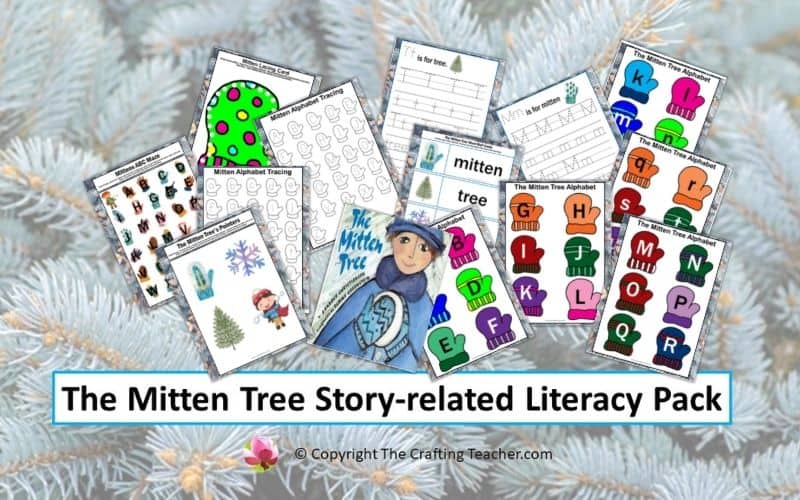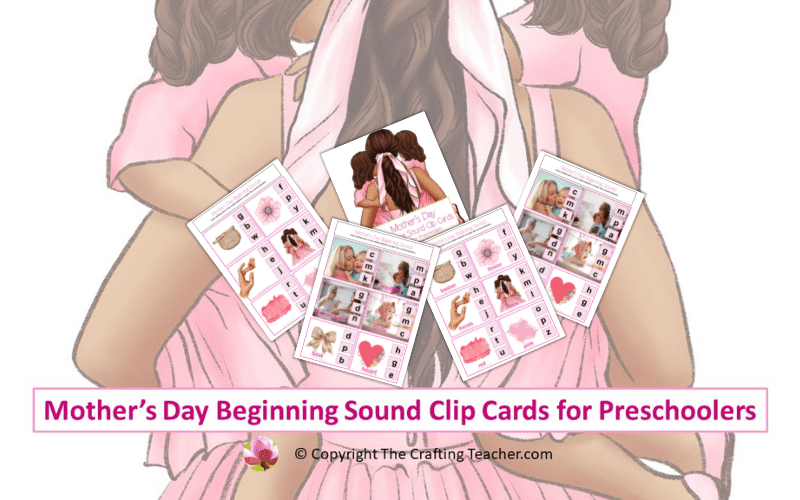The Tiny Seed Story-related Literacy Pack for Preschoolers
Affiliate Disclosure: “This post contains affiliate links, which means I receive a small commission, at no extra cost to you, if you make a purchase using those links”.
The Tiny Seed by Eric Carle is a beautiful and fascinating story that tells about the life cycle of a flower through the adventures of a tiny seed. Explain how the seed progresses as it floats across the sky, nestles in the ground, and finally grows into the giant flower it was always meant to be, using great illustrations and lively text.
I would like to offer you some ideas and a FREE 38-page long The Tiny Seed literacy pack with multiple activities to go along with this wonderful story which you can download at the end of this post.
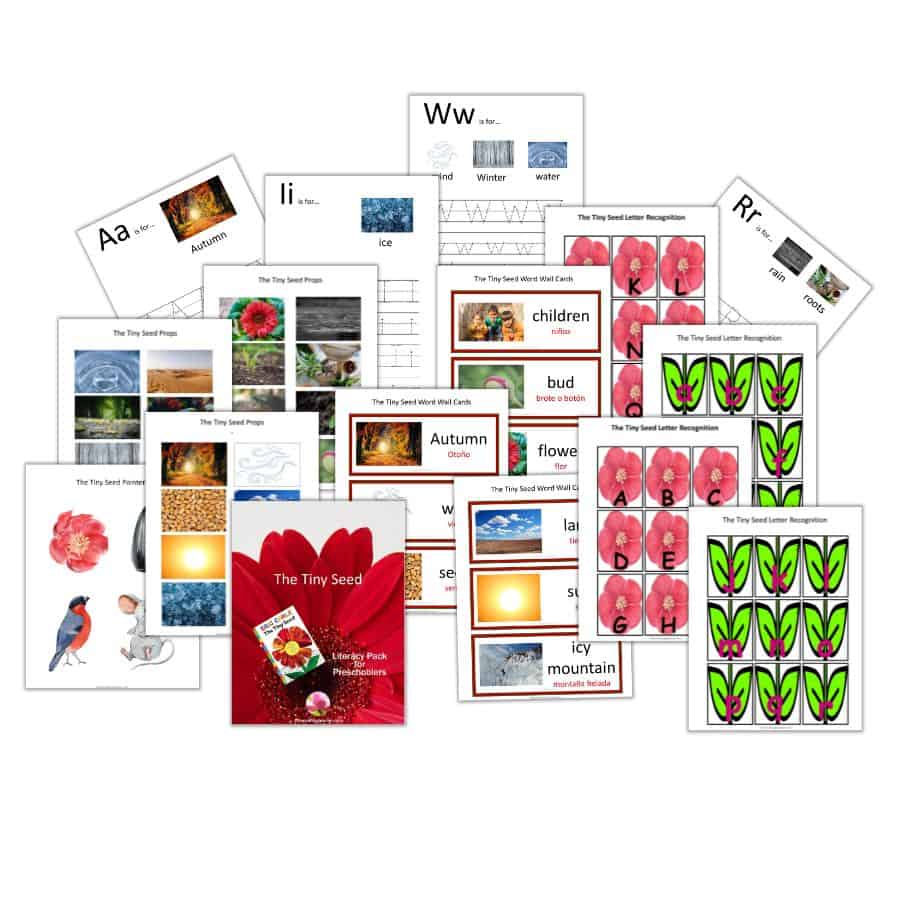
Importance of Literacy
The development of literacy skills includes awareness of books and prints, knowing the relationships between letters and sounds that makeup words, vocabulary development, and understanding stories. It is a process that starts from the very beginning of a child’s life, and it is the base for his or her future language development and the ability to read, write, and overall learning. If a child cannot read, it will be impossible for him or her to learn important concepts such as Math and Science, and understand the world around him or her.
Reading Aloud and Emergent Comprehension
The Tiny Seed is one of my favorite Eric Carle stories, because I can see the underlying message of never giving up no matter how small you are, and I feel it’s a powerful one.
Start by reviewing the parts of the book: cover, title, author, illustrator, spine, and back. Continue by showing them the beautiful illustrations in the book without reading. Use the opportunity to ask questions and let them comment about what they see. Some questions you can use are:
- What do you see on this page?
- What do you think is happening?
- What colors do you see?
- Have you seen a place like this?
Then read the story. Make it interactive as you visit different places and see different animals while reading the story. For example:
- Make a sound to represent the wind transporting the seed.
- When you get to the ocean, move your hands to represent the waves or make the sound of waves crashing against rocks.
- Pretend to be cold when you reach the icy mountain.
- Use a tissue to dry your forehead and a paper fan to cool yourself when visiting the desert.
When the seeds begin to grow introduce the parts of a plant (roots, stem, leaves, and flowers), pointing at them and saying each part’s name. If your children already know these parts, invite a child to point at the parts and say their names. In this case, you can use the opportunity to ask questions such as:
- Why a plant needs roots?
- Why color is the stem?
- How many leaves do you see?
- What do some animals use the flowers for?
When you reach the part where the little seed begins to grow you can ask:
- Do you think the tiny seed will be able to grow?
- Do you think it will be a little or a big plant?
- Do you think it will grow flowers?
During reading ask open-ended questions such as questions about the student’s life experiences, such as:
- Where is the story taking place?
- Why do you think the seeds are carried by the wind?
- Do you think this story is real or make-believe? Why? Why not?
- Why do you think the sun burned the seed?
- Do you think seeds are good for birds? Why? Why not?
- When do you think is better to plant?
- Which animals do you see in the story?
- What seasons are mentioned in the story?
- What was your favorite part of the story? Why?
When I read a book, I like to use pointers to mark the words as I’m reading. That is an easy and very efficient way to show preschoolers that you read from left to right and top to bottom, and that words have meaning.
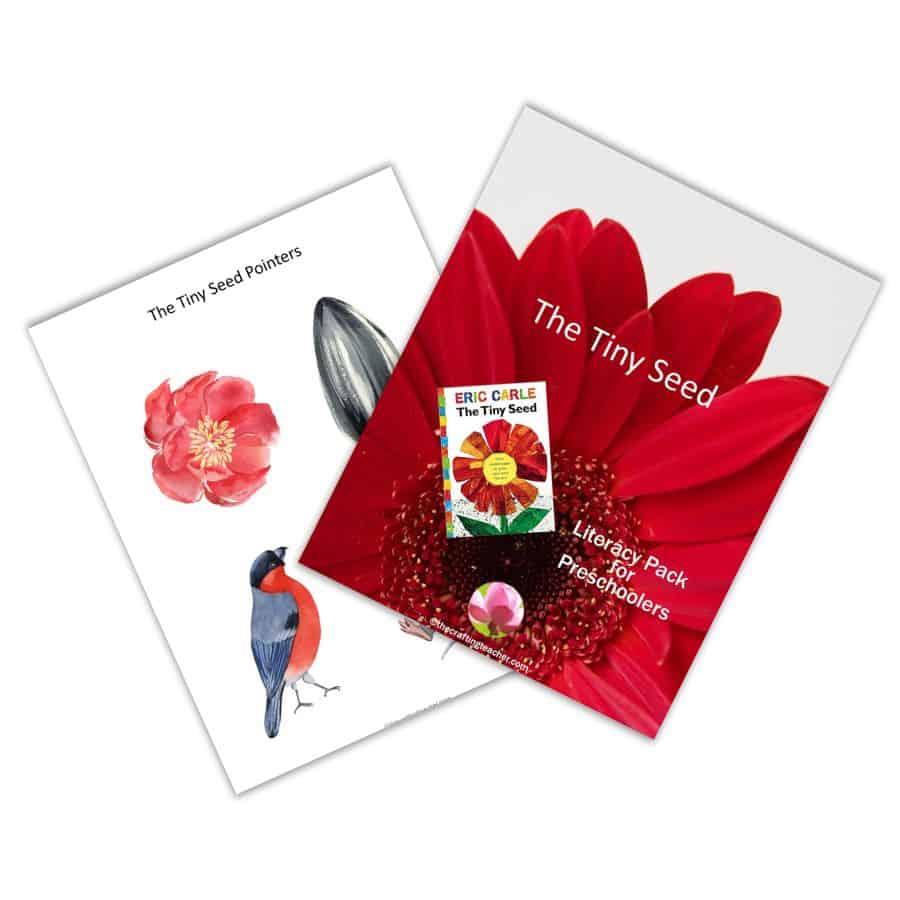
I included four FREE pointers in The Tiny Seed literacy pack for you to use with this book. You just have to print them in white cardstock, cut them out, laminate them and glue them to a tongue depressor, for easier use.
Retelling the Story
Gather the children in a circle on the floor. Place a brown sheet of construction paper in the middle of the circle, and tell them that it represents the soil.
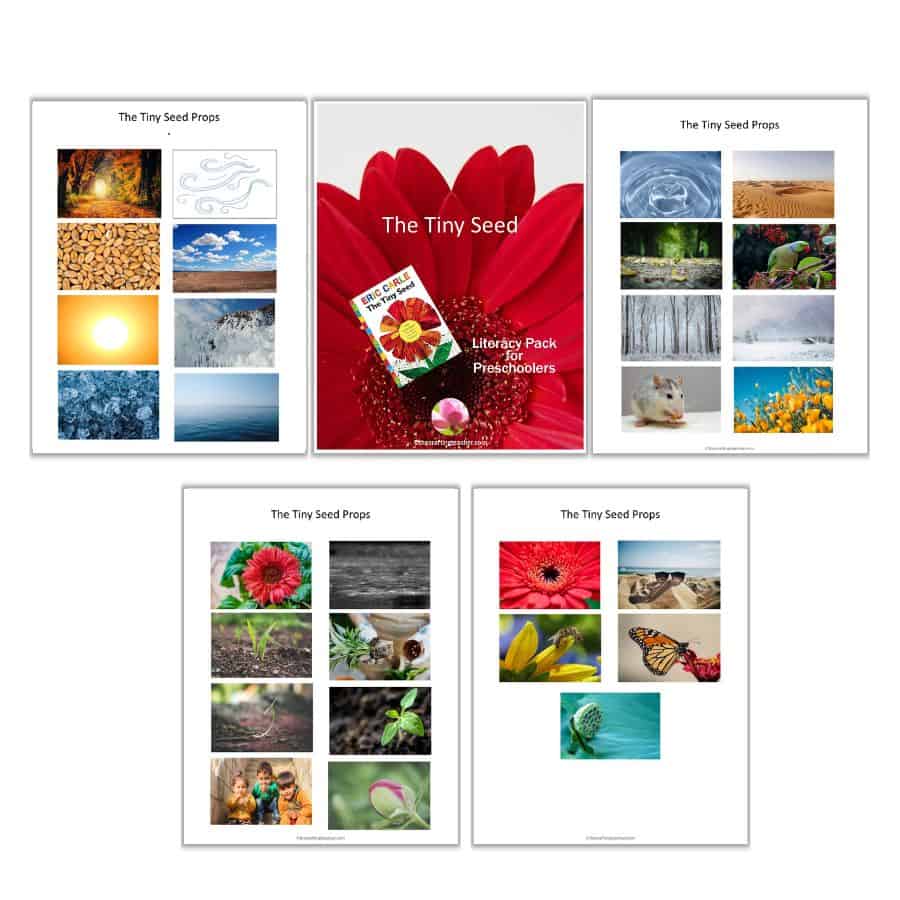
Print out in white cardstock and laminate the FREE picture cards of seeds, wind, sun, etc. provided in The Tiny Seed pack as props. Distribute the story props among the students and encourage them to retell the story using their props. They should place the props in the “soil” to act out the story. When the activity is complete, place the props and the “soil” in the Listening or Library Center, to invite the children to retell the story on their own.
You can also put Velcro on the back of the pictures, to use them on the flannel board, and/or use YouTube to retell The Tiny Seed story, using the video below.
Oral Language and Vocabulary Development
If you use a Word Wall, add the FREE words provided in The Tiny Seed pack, to teach them to your students. I included 29 of the words that appear in the story, both in English and Spanish.
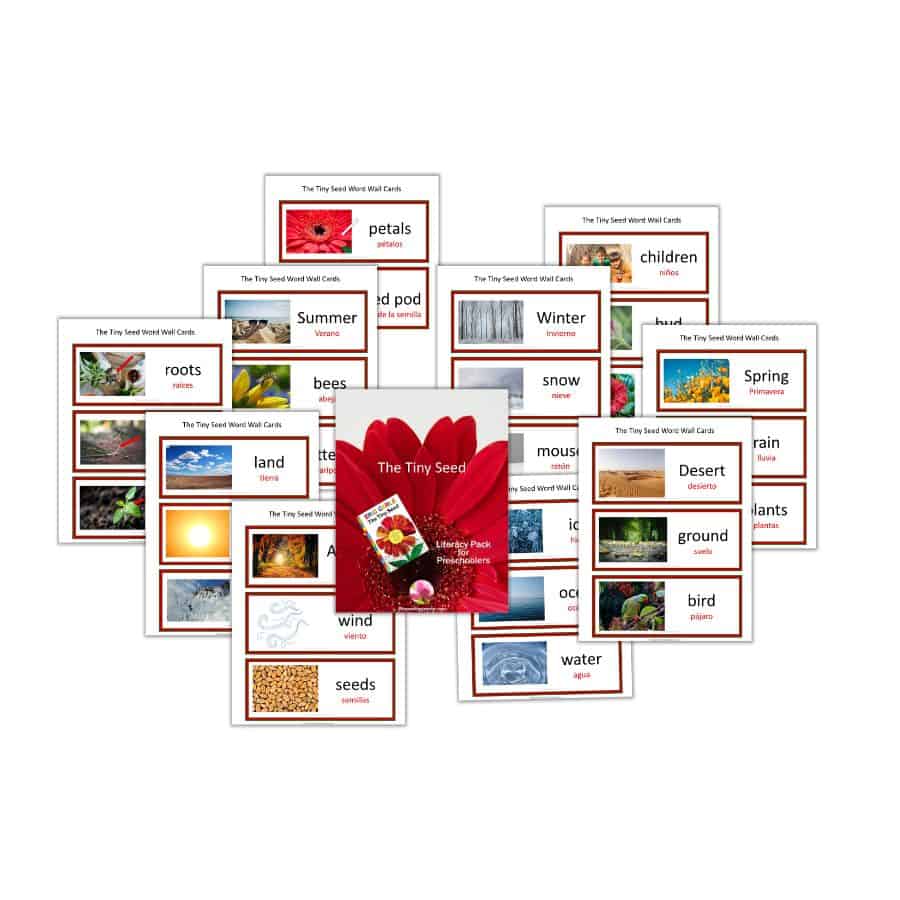
Print them in white cardstock and laminate them for durability. Encourage your children to use each Word Wall word in a short sentence. You can also use them to review the name and/or sound of the beginning letter of each word.
Other ways to use these words are by having the children copy the words using pencils, markers, or crayons, finding the same words in other texts, and matching the letters with magnetic, wooden, or foam letters.
Letter Recognition
This FREE The Tiny Seed literacy pack includes a letter recognition activity using the entire alphabet, in uppercase and lowercase letters. You can have the children working alone or in pairs to match the flower’s uppercase letters, with the plant bodies’ lowercase letters. Use all or part of the letters, according to the developmental stage of your children.
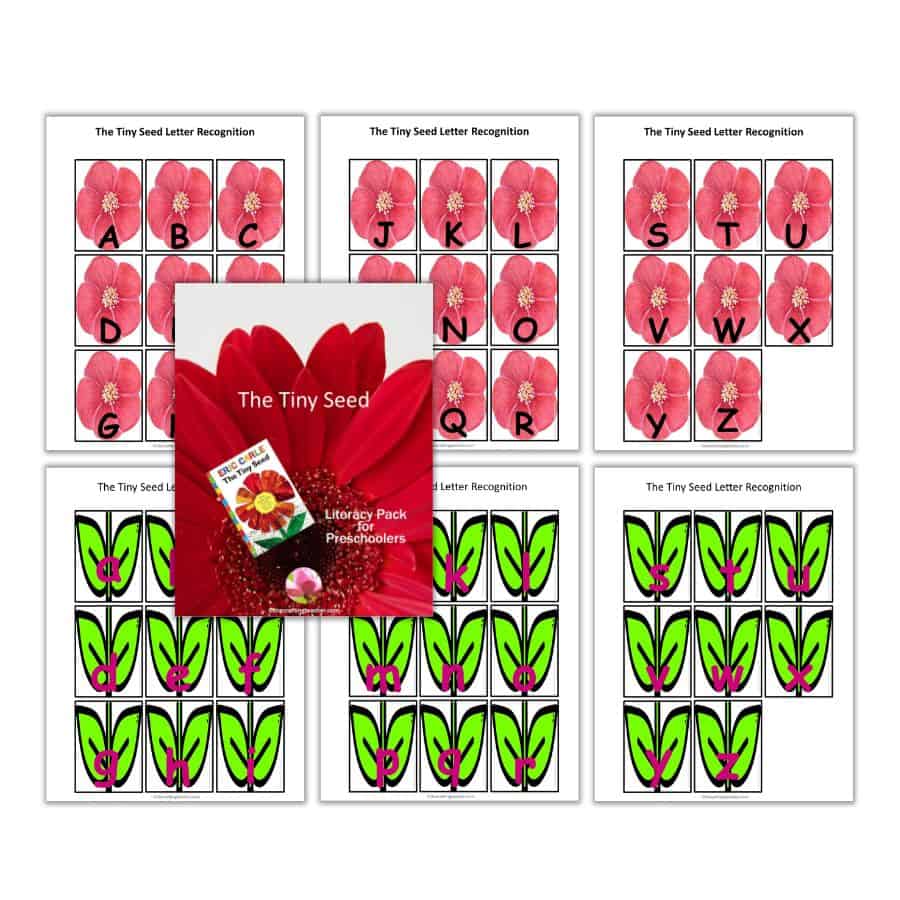
You can also add these cards to your sensory table filled with soil or black beans, for a combined activity.
To prepare this activity you just have to print out the pages in white cardstock, cut out the cards, and laminate them for durability.
Phonological Awareness and Phonics
Phonological awareness is the ability to recognize the speech sounds of syllables, words, and sentences, and be able to manipulate those sounds. The development of this skill allows children to learn how to read and write.
Phonics is the ability to match letters or groups of letters with the sounds they make. This ability allows young readers to comprehend the meaning of words as they read.
Letters in the Wind
Remind your students that individual letters are put together to make words. Say and spell some words from The Tiny Seed story using your Word Wall Cards. Ask the children to move their hands in a wind motion, every time you say a letter.
You can ask more advanced students to say the correct letter at the beginning of each word and spell some of the words as well.
Blends
Tell your children that they are going to practice how to read, by blending sounds together to make words. Call out the words from the story, one phoneme at a time, and ask the students to practice blending the sounds together to form the words.
Emergent Writing
Children’s first attempts to write involve scribbling and drawing. As they progress, they start including letters, spelling, and basic grammar. This stage of development is called emergent writing.
Tracing Letters
This FREE The Tiny Seed literacy pack includes 14 letter sheets: Aa for Autumn; Bb for bird, bud, bees, and butterfly; Cc for children; Dd for dessert; Ff for flower; Gg for grown; Ii for ice; Ll for land and leaves; Mm for mountain and mouse; Oo for ocean; Pp for plants and petals; Rr for rain and roots; Ss for seed, sun, seed pod, snow, Spring, steam and Summer; and Ww for wind, Winter and water.
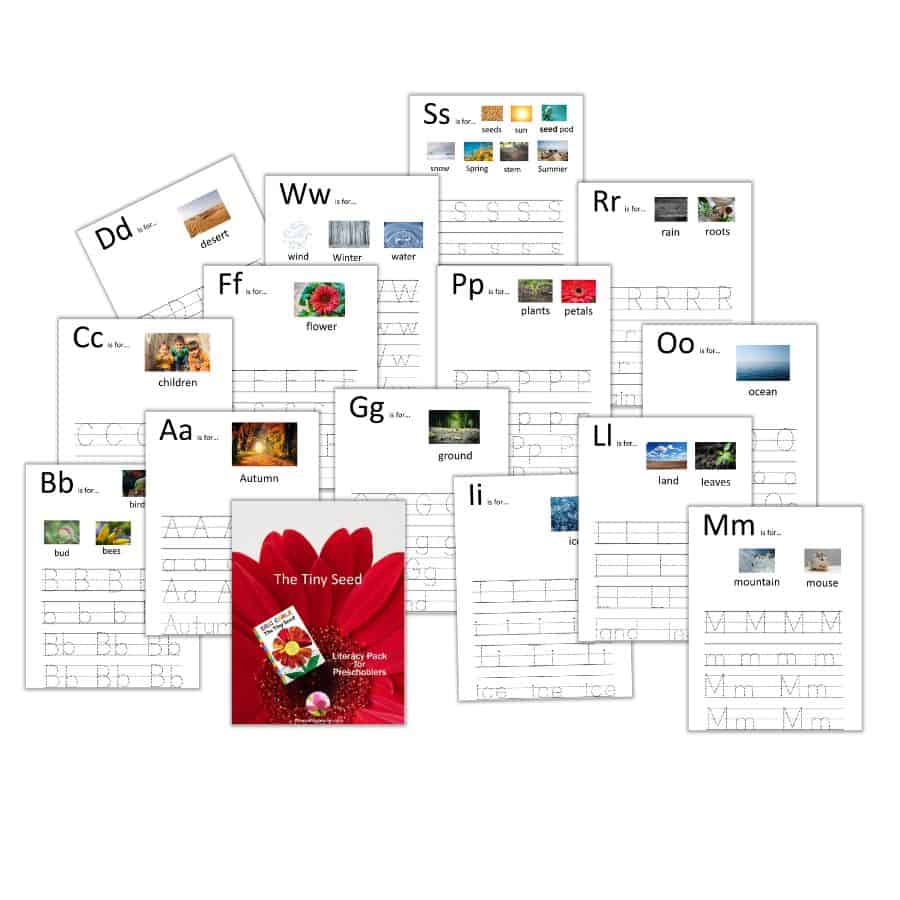
Print each page using white cardstock and laminate them or place them in a dry-erase pocket to make them last longer, and use them multiple times. Invite the children to use a dry-erase marker to trace the letters.
This activity is great to strengthen the children’s language, letter recognition, pre-writing, and fine motor skills. To extend the activity you can use the to:
- Teach or review letters’ sounds and names.
- Spell the words.
- Match each letter and word with magnetic, foam, or wooden letters.
- Copy the letters using crayons, markers, or pencils.
Write a Class Story to Make a Book
During circle time invite your children to create a story, reminding them that the story has to have a beginning, middle, and end. Ask them to imagine they are a tiny seed, and you are going to create a story about
You can encourage them by asking them to pretend they are tiny seeds in the wind. Have them close their eyes and imagine where the wind is going to take them. Starting by asking them how you should start the story. If you want, you can help them by saying something like “The wind is blowing….”, or “I feel the wind…”. Any phrase will help them start.
Use chart paper to take dictation. When the story is finished, print it out and have the students illustrate the story. Put it together as a book for the library, and make a copy for each of the authors.
Related Books
Take advantage of the attraction children feel for seeds, plants, and gardening in general, and add books related to those topics to your library and other centers, to give children a wide learning experience and variety to choose from. I’m sure the previous activities will spice up their curiosity, and books are an excellent source of knowledge.
These books can be found at your local library, used book store, and on Amazon. If you want to add them to your collection, you can use my affiliate link for immediate access.












Pin It For Later
If you are in a rush and don’t have time to read the post and download the printable but want to save it for later, pin this to your Literacy board on Pinterest for later.
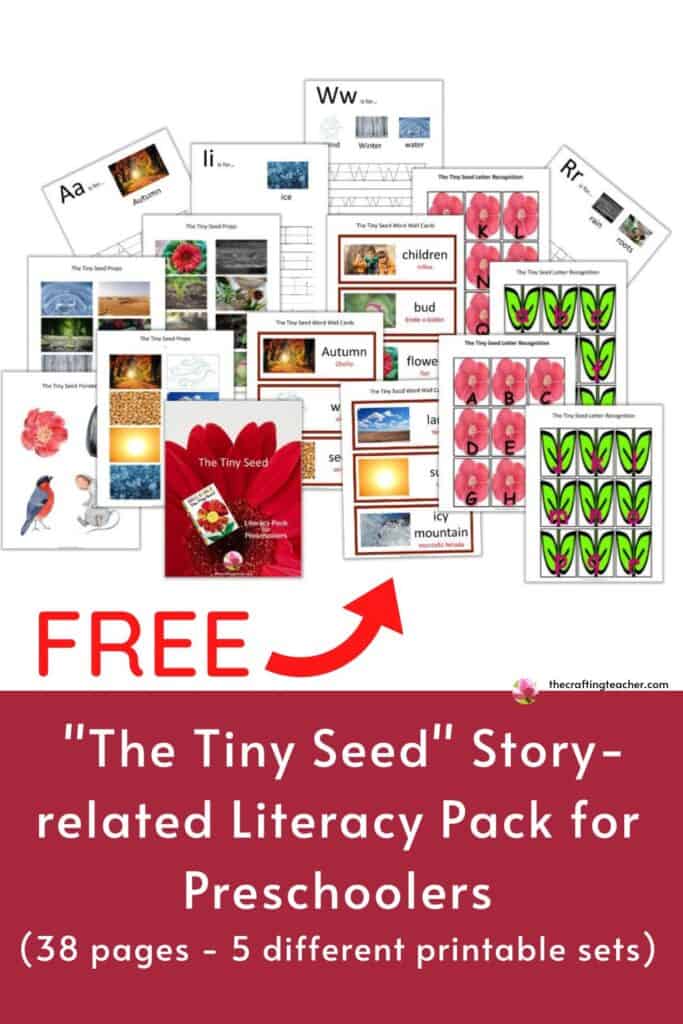
If you are in a rush and don’t have time to read the post and download the printable but want to save it for later, pin this to your Literacy board on Pinterest for later.
Be happy, safe, and creative. I wish you well.
Love,

P.S. Please let me know if these activities work for you, and if you would like to see an article or a printable about how to make something specific, to create it for you.



